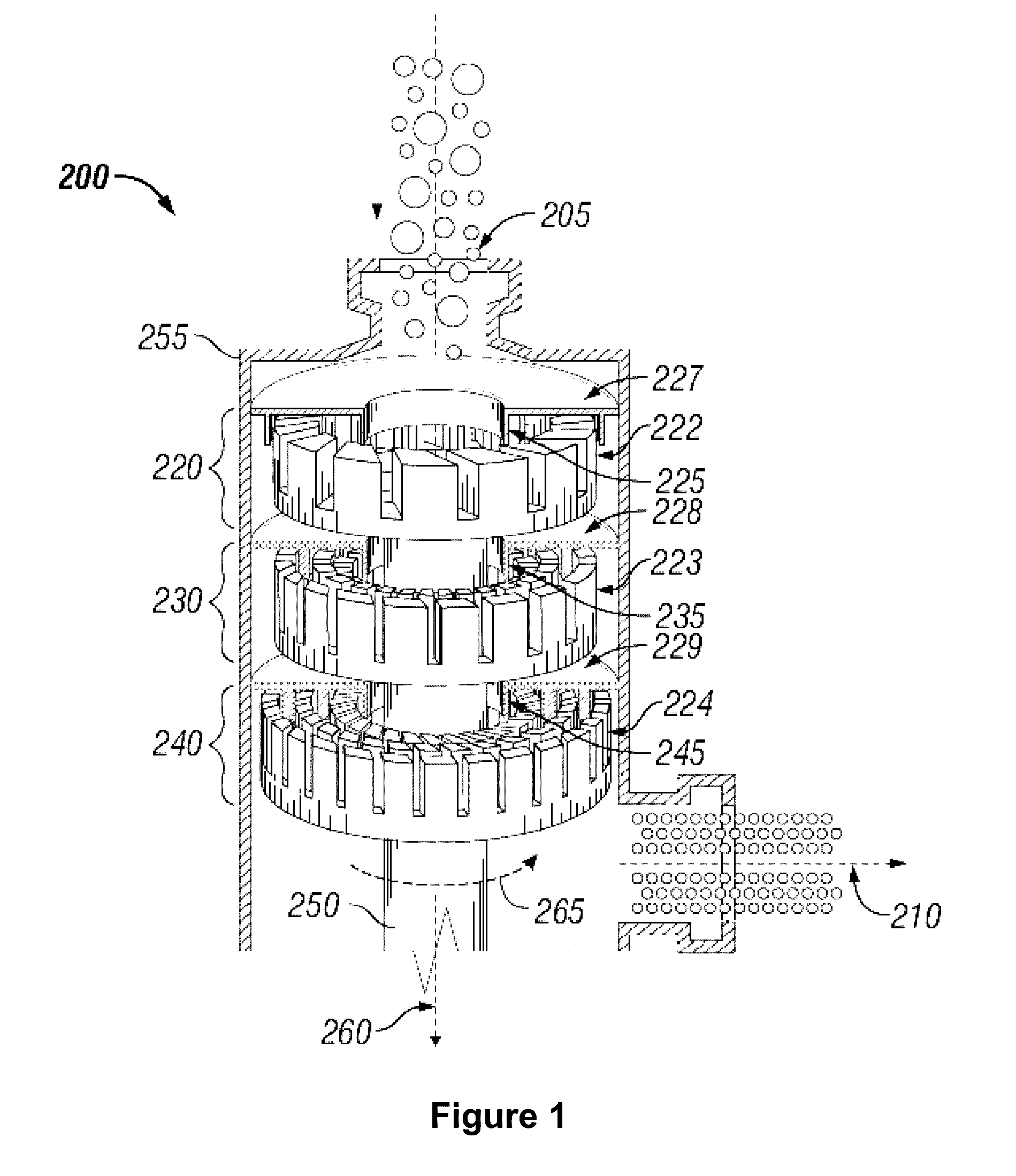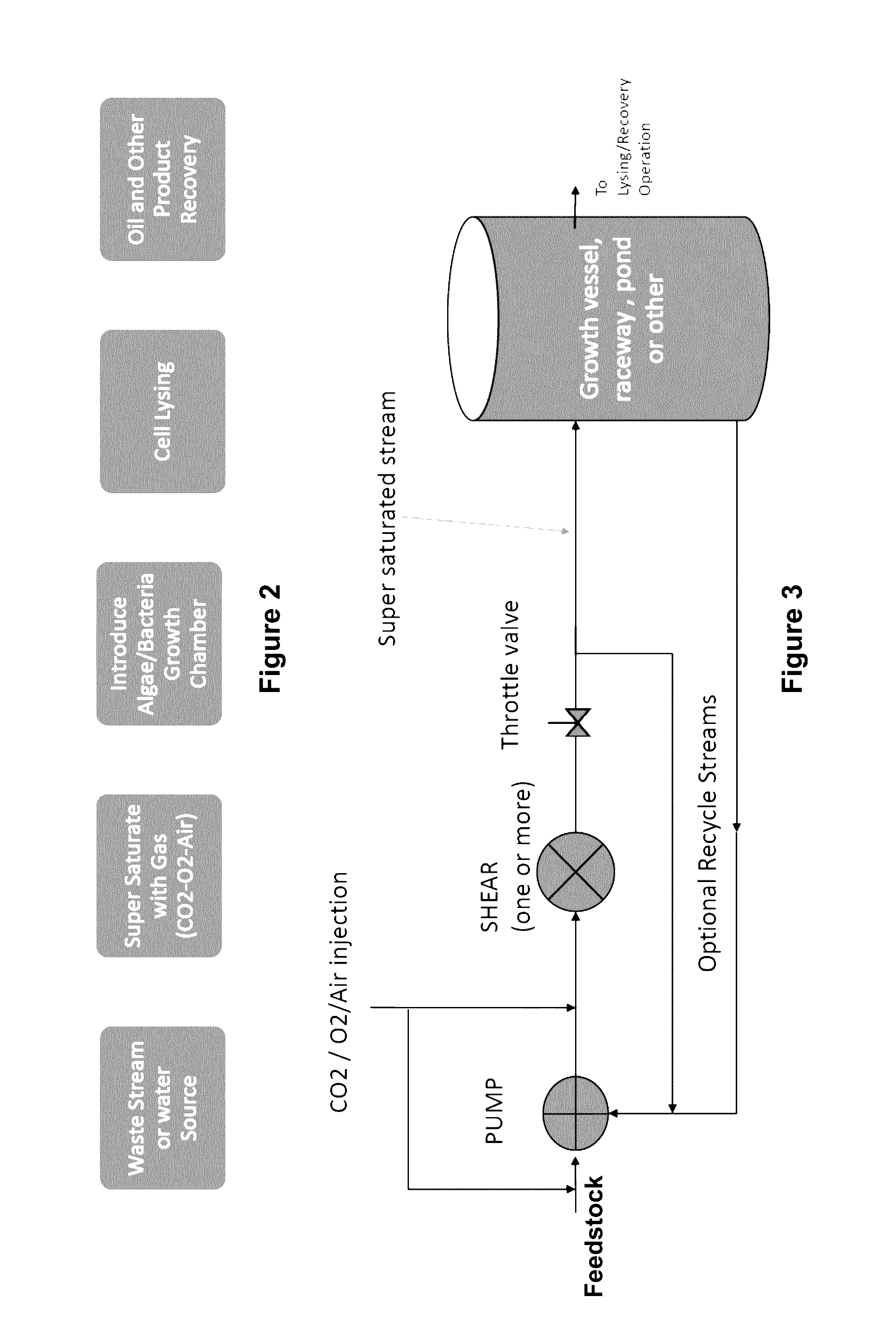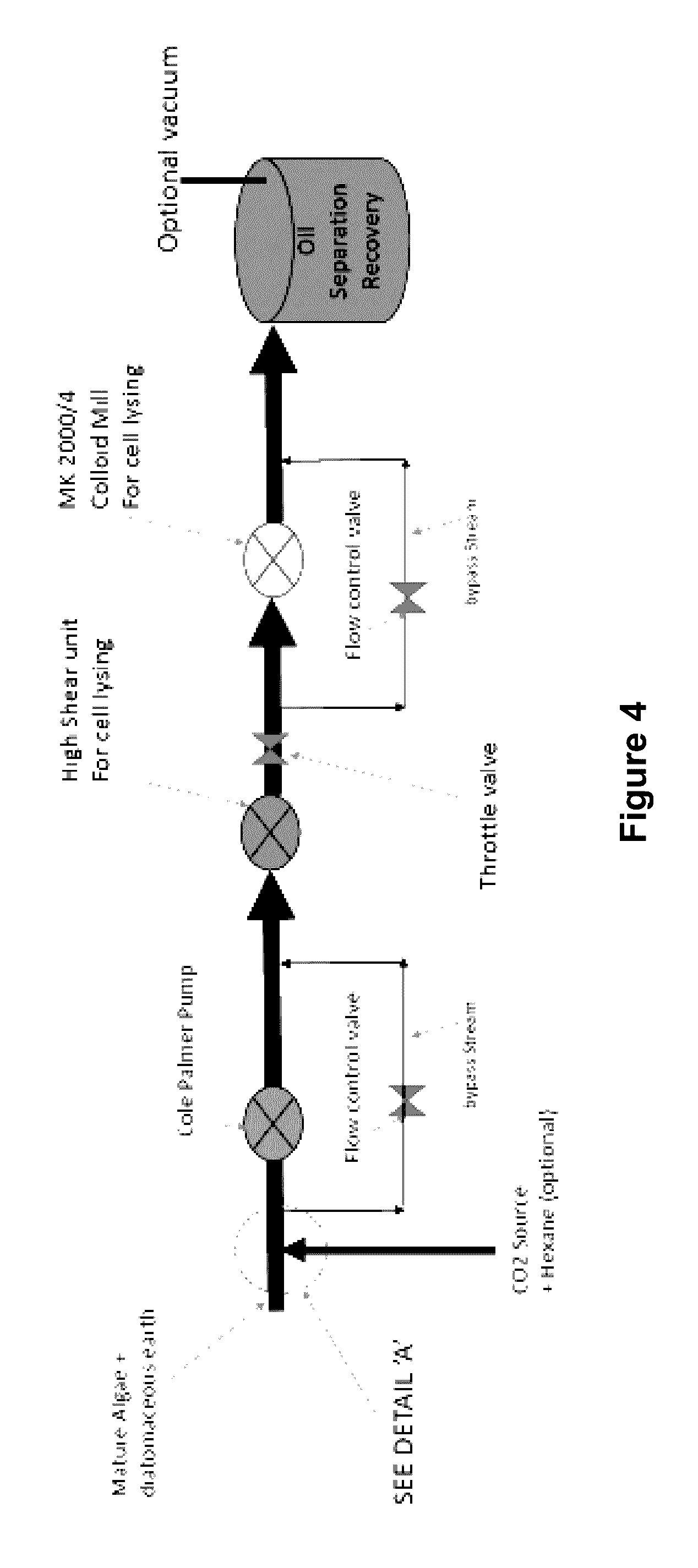System and process for recovering algal oil
a technology of algal oil and recovery system, applied in chemical/physical processes, biomass after-treatment, lipidic food ingredients, etc., can solve problems such as cell expansion and eventually cell death
- Summary
- Abstract
- Description
- Claims
- Application Information
AI Technical Summary
Benefits of technology
Problems solved by technology
Method used
Image
Examples
example 1
Effects of Super-Saturation Using High Shear
[0091]Carbon dioxide (CO2) is readily soluble in water in the form of a dissolved gas. Surface waters normally contain less than 10 ppm free carbon dioxide, while some ground waters may easily exceed that concentration. Over the typical temperature range (0-30° C.), the solubility is about 200 times that of oxygen. When CO2 reacts with water, it immediately forms carbonic acid (H2CO3), which is relatively unstable. This further dissociates to form bicarbonate (HCO3−) and carbonate (CO32−) ions.
[0092]Compared with oxygen, the estimation of carbon dioxide in water presents much greater difficulties. Although pH is widely used to measure the presence of carbonic acids and carbonates in solution, the presence of carbonate forming ions, including calcium, magnesium, and sodium may interfere with total dissolved carbon measurements.
[0093]The total inorganic carbon (TIC) or dissolved inorganic carbon (DIC) is the sum of inorganic carbon species (...
example 2
Effects of Cell Lysing Using High Shear
[0107]Cost-effective methods of disruption of the algal cell wall are fundamental to obtain higher lipid extraction efficiencies, meaning greater net energy output from the process. For this example, the effects of a method of algae cell disruption, CO2-assisted high shear, was assessed using cultured Chlorella sp. The combination of the actions of supersaturated micro-sized CO2 bubbles and physical shearing offer a unique hybrid approach to algae cell lysing and lipid recovery. It has been unexpectedly discovered that supersaturated micro-sized CO2 bubbles work in synergy with mechanical high shear action to improve cell disintegration efficiency.
[0108]Although the energy required vs. energy recovery (energy return on investment) of this system was not assessed during the current testing, the system is expected to improve upon the EROI of other algae disruption technologies because it does not require pre-drying, high pressures, nor increased ...
example 3
Gas-Assisted High Shear Cell Lysing
[0139]Flow-through algae cell disruption testing was demonstrated in Example 2 using a CO2-infused high-speed, high-pressure rotor-stator homogenizer (HSPH) and colloid mill homogenizer (CMH). The testing showed that the infusion of pressurized CO2 into the HSPH and immediate exposure to the CMH are unique and important drivers of the cellular disruption efficiency. A proposed mechanism states that the rapid infusion of CO2 into the algal cells causes intracellular disruption and cellular swelling, and the immediate subsequent exposure to shear forces significantly enhances cellular disruption and product recovery. Although energy balance was not examined, the algae were compromised in a single pass, and therefore, the required energy input into the system is expected to be far less than current non-CO2 shearing technologies that require multiple passes.
[0140]The CO2-assisted shearing system was likewise tested using yeast as the bio-feedstock. Aft...
PUM
| Property | Measurement | Unit |
|---|---|---|
| back pressure | aaaaa | aaaaa |
| back pressure | aaaaa | aaaaa |
| back pressure | aaaaa | aaaaa |
Abstract
Description
Claims
Application Information
 Login to View More
Login to View More - R&D
- Intellectual Property
- Life Sciences
- Materials
- Tech Scout
- Unparalleled Data Quality
- Higher Quality Content
- 60% Fewer Hallucinations
Browse by: Latest US Patents, China's latest patents, Technical Efficacy Thesaurus, Application Domain, Technology Topic, Popular Technical Reports.
© 2025 PatSnap. All rights reserved.Legal|Privacy policy|Modern Slavery Act Transparency Statement|Sitemap|About US| Contact US: help@patsnap.com



